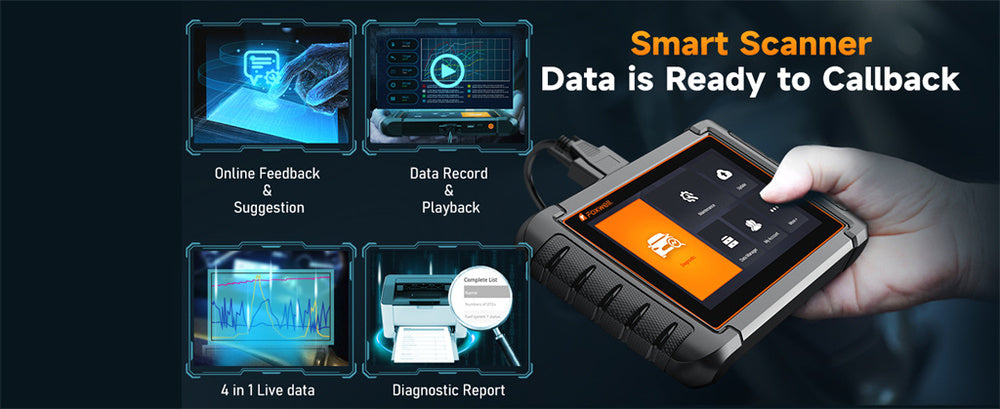A common question among car owners and technicians is whether a code reader can detect a blown fuse directly. Unfortunately, no.
These readers, which primarily serve to read and clear diagnostic trouble codes (DTCs) from vehicles onboard computer systems, cannot typically detect an overheated fuse independently. Still, they may provide valuable clues leading to its discovery. This article explores how code readers work, their limitations, and those capable of helping detect blown fuses.
What Is a Code Reader?

A code reader is designed to connect with a vehicle's onboard diagnostics (OBD) system. Once connected via its OBD-II port, this tool retrieves trouble codes that indicate issues within its systems, such as engines, transmissions, emissions, or any critical functions that require constant attention—whether engine issues, transmission malfunctions, or emissions problems arise from this connection.
Types of Code Readers
Code readers come in various varieties, each providing different levels of functionality and diagnostic capability.
Basic Code Readers: Basic code readers provide limited functionality but are designed for simple diagnostic needs and users looking to resolve simple issues quickly. With their limited functionality and lack of detail or advanced diagnostics features, primary readers are best used for simple diagnosis tasks and users seeking quick resolutions of fundamental issues.
Advanced Code Readers: These models feature enhanced capabilities for monitoring live data streams, graphing capabilities, and providing diagnostic information about various vehicle systems.
One such advanced code reader is the Foxwell NT809BT. This Bluetooth OBD2 scanner offers comprehensive diagnostic and maintenance capabilities. It can read and clear codes from all electronic modules such as ABS, engine, SRS, BMS, audio headlamp, and A/C, among many others. Additionally, it supports all OBD II functions, such as reading codes, clearing them away, viewing freeze frame data, O2 sensor testing, and component tests.
The NT809BT also has bi-directional capabilities, enabling active tests by sending commands directly to a vehicle's ECU for driving actuators like ABS, windows, doors, and wipers - helping quickly pinpoint any problematic parts.
Professional Scan Tools: Used by experienced mechanics, these scan tools offer comprehensive diagnostic capabilities, such as manufacturer-specific codes, real-time data, and advanced functionalities that assist in more complex troubleshooting. Typically, these come equipped with software and detailed analysis tools suited for professional automotive repair settings.
How Code Readers Work
Code readers work by connecting to a vehicle's OBD-II port and communicating with its engine control unit (ECU). They retrieve stored trouble codes, which provide useful insights into potential issues within the vehicle's systems, including electrical ones, where problems could indicate the presence of a blown fuse.
Finding Blown Fuses with Code Readers
While code readers don't directly detect blown fuses, they can help pinpoint symptoms that indicate they are present. For instance, if your code reader shows trouble codes related to electrical components like lights, radios, or sensors, it could signal that there is an issue involving fuse breakers.
Communication errors between the ECU and various sensors or modules might indicate a blown fuse. At the same time, multiple systems failing at once could indicate one fuse blowing out across several circuits.
Understanding these clues enables you to use a code reader more effectively to narrow down potential causes and inspect fuses accordingly, thus helping you locate the issue more quickly. This systematic approach ensures a more precise diagnosis.
Use Code Readers to Recognize Blown Fuses
When it comes to effectively using code readers to identify blown fuses, you should follow a few best practices. First and foremost, check for multiple fault codes; multiple unrelated systems showing fault codes could indicate an electrical problem, such as a blown fuse.
Second, take advantage of the live data monitoring feature available on advanced code readers to detect any anomalies in electrical component performance that could indicate fuse problems.
Ensure your diagnostic tools are current and that you and your technician have received proper training to interpret their data accurately. Doing this early could save time and money by quickly pinpointing any potential problems within the vehicle's electrical system and avoiding further damage.
Limitations of Code Readers
One of the main drawbacks of code readers is their inability to inspect physical conditions directly, providing only clues through fault codes or real-time data. For example, they cannot visually inspect a fuse's continuity.
Additionally, code readers have difficulty diagnosing intermittent electrical problems, like those caused by blown fuses. These intermittent issues do not always trigger an error code and may require multiple scans or additional diagnosis techniques to pinpoint.
Low-end code readers often need more functionality for comprehensive diagnostics. Basic models may not offer live data monitoring or enhanced diagnostic capabilities, making it more challenging to pinpoint electrical issues—including blown fuses—quickly.
These limitations emphasize the significance of using more sophisticated or professional diagnostic tools, including code reader data and manual inspection for precise troubleshooting.

Conclusion
While code readers can't detect a blown fuse directly, they can provide valuable clues that lead to its identification. By understanding the various types of code readers available and their functioning methods, you can select an ideal tool to assist in diagnosing electrical problems, including those caused by blown fuses. Advanced and professional-grade code readers offer advanced functionality, which makes the troubleshooting process faster and more effective.
FAQs
Can a basic code reader detect a blown fuse?
No, basic code readers cannot directly detect blown fuses but can indicate electrical issues that may be related.
What features should I look for in a code reader to help detect blown fuses?
Look for advanced features such as live data monitoring, graphing capabilities, and enhanced diagnostics.
How can I use a code reader to identify a blown fuse?
Check for multiple electrical-related fault codes, monitor live data for anomalies, and use enhanced diagnostics for detailed information.




Leave a comment
This site is protected by hCaptcha and the hCaptcha Privacy Policy and Terms of Service apply.